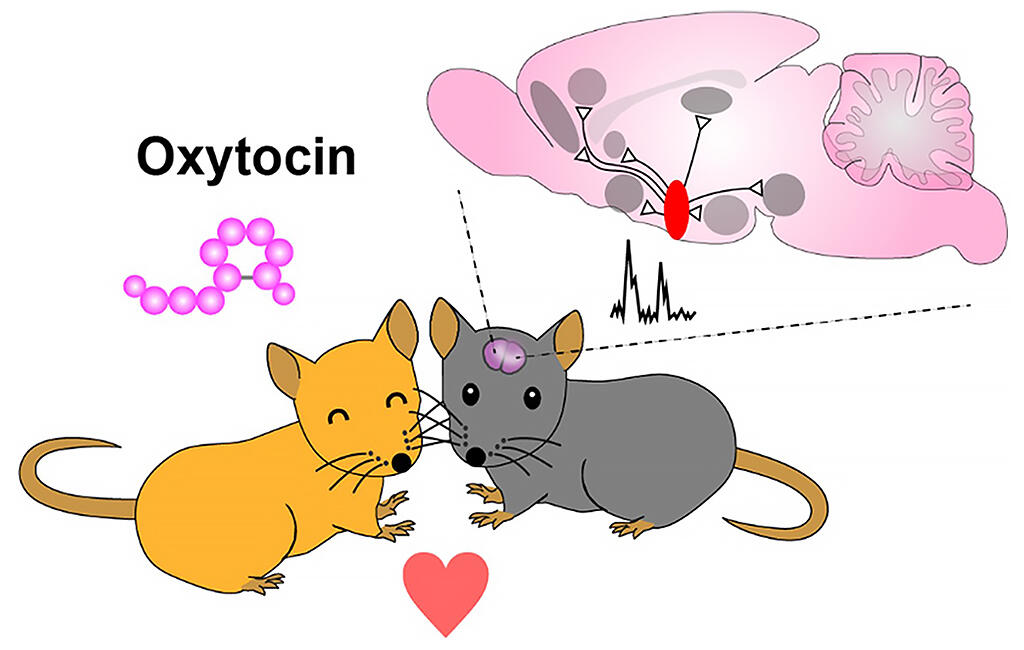A joint research group consisting of Lecturer Daisuke Ino and Professor Hiroshi Hibino of the Graduate School of Medicine, Osaka University, Professor Masaaki Nishiyama of the Faculty of Medicine, Institute of Medical, Pharmaceutical and Health Sciences, Kanazawa University, and their colleagues has succeeded in developing a technique to measure oxytocin, a neuropeptide, in the brains of living animals (mice).

Provided by Osaka University
Oxytocin is a substance in the brain that is also known as the 'happy hormone.' It is thought to play a key role in evoking rich emotions as well as in mental and physical health. However, it is difficult to gain an understanding of oxytocin in the brains of living creatures with a high level of sensitivity using existing techniques, so the dynamics of oxytocin in the brain are shrouded in mystery.
The group first measured these dynamics by developing a highly sensitive fluorescent sensor that can detect oxytocin. They started by developing a fluorescent sensor that show changes in light intensity as a result of bonding to extracellular oxytocin. The sensor's design made use of chimeric proteins made up of green fluorescent proteins and oxytocin receptors (cell membrane proteins that bond with oxytocin). The group added mutations, in sequence, to these chimeric protein sensors, finally developing MTRIAOT, a super-sensitive fluorescent oxytocin sensor that changes in fluorescence intensity by up to eight times in response to oxytocin.
Next, they introduced MTRIAOT to mouse brains and measured the oxytocin dynamics in these brains in a variety of experimental conditions. As a result of their measurements, they were able to observe an artificially induced increase in oxytocin in the brain through the administration of drugs and light stimulation, as well as control of the concentration of endogenous oxytocin in response to a variety of stimuli from the outside world.
Ino commented, "By going ahead with research that makes good use of the tools we have developed, we hope to advance our fundamental understanding of information-processing capabilities via oxytocin in the brain, and anticipate new developments in clarifying the clinical condition of refractory neurological disorders such as autism spectrum disorders and schizophrenia, and developing new therapies for these."
■ Oxytocin: A neuropeptide made up of nine amino acids created in the neural cells of an area of the brain called the hypothalamus. Its role in controlling childbirth and lactation when secreted in the blood is classically well known, and researchers have also learned that it is secreted directly into the brain. Plenty of mysteries still surround its role in the latter, and in recent years people around the world have carried out active research on this.
This article has been translated by JST with permission from The Science News Ltd.(https://sci-news.co.jp/). Unauthorized reproduction of the article and photographs is prohibited.




